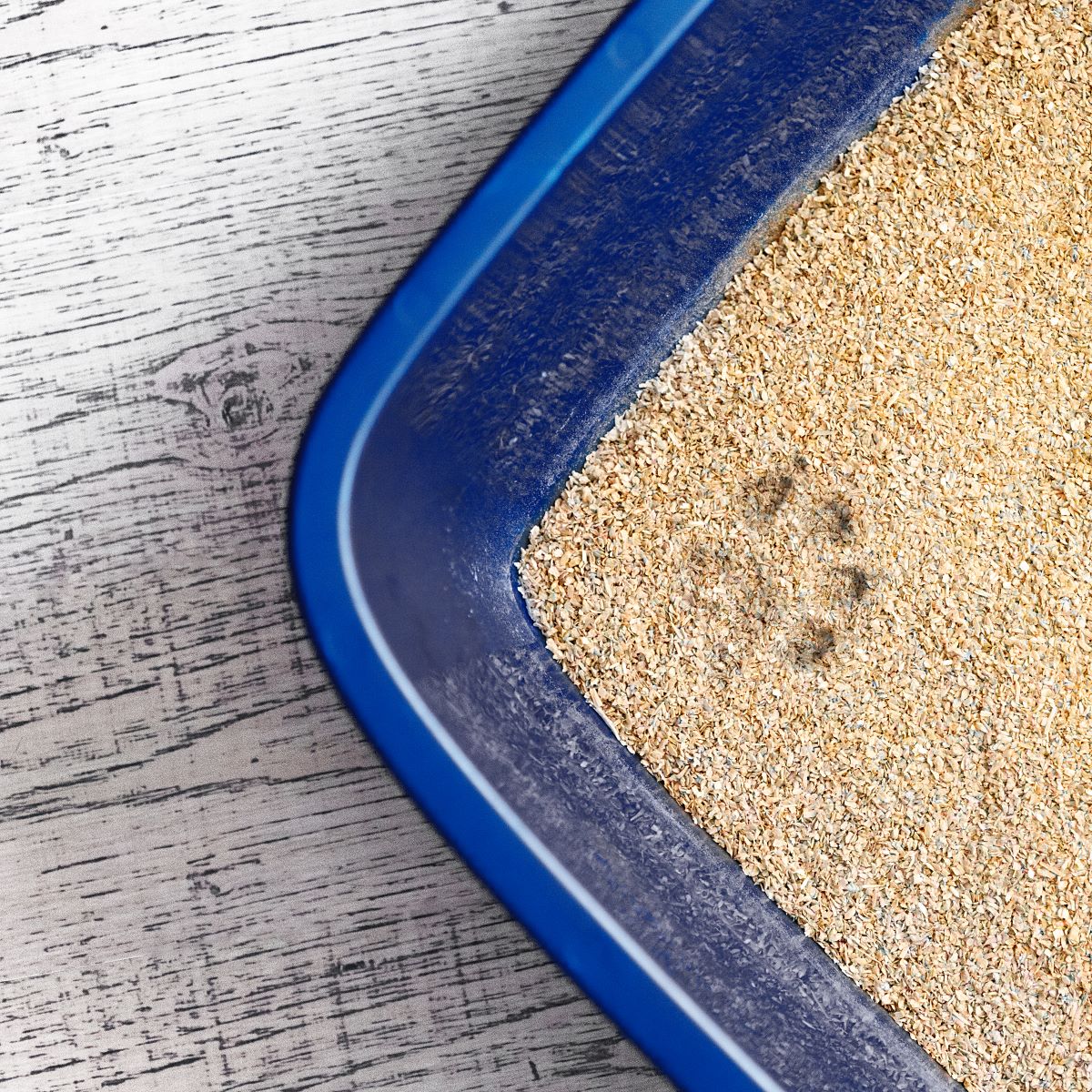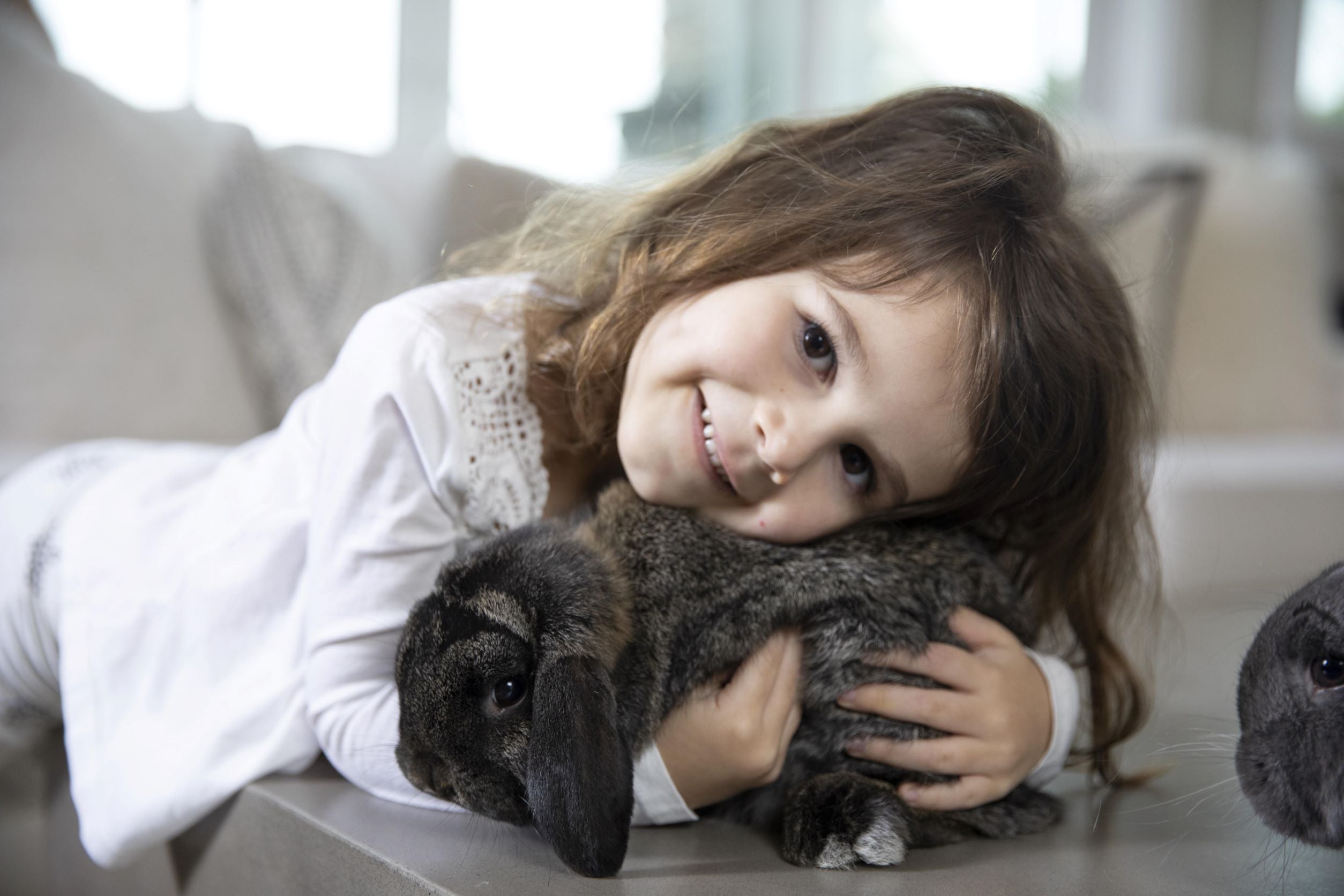Maine Coon Size Guide: What to Expect from This Majestic Breed
Photo by Bee Felten-Leidel on Unsplash
The Maine Coon cat is celebrated not just for its large size but also for its gentle and affectionate personality. Known as the "gentle giant" of the cat world, Maine Coons are a breed that captivates many cat lovers. However, their imposing presence requires some preparation, particularly for those unfamiliar with the breed's characteristics. In this guide, we'll explore everything you need to know about Maine Coons’ dimensions and how to care for these majestic felines.
Why the Maine Coon’s Size is So Impressive
Understanding the size of a Maine Coon isn’t just about knowing how big they get; it's about understanding how their growth and physicality shape their personality, behavior, and care needs. There are several factors that influence the size of this breed, from genetics to diet.
1. Genetics and Breeding
Like any breed, genetics is the primary driver behind a Maine Coon’s growth. If a cat comes from a line known for producing large cats, it’s likely to grow larger. This can make a significant difference in the final size of the cat, so choosing a reputable breeder can help you know what to expect in terms of growth.
2. Gender Differences
Male Maine Coons are typically larger than females. The Maine Coon size in males can be significantly heavier and longer than in their female counterparts, although individual size may vary based on other factors. As you look into adopting a Maine Coon for sale, it's good to know that their size can range quite a bit based on gender.
3. Nutrition and Diet
Diet plays an essential role in a Maine Coon's growth and overall health. The right kind of nutrition can support their muscle development and bone health. Protein-rich cat food is necessary to sustain their active lifestyle and contribute to their strong and muscular build.
4. Activity and Exercise
Maine Coons are active cats that love to play. Encouraging your cat to be active is vital, not only for their weight management but also for muscle strength. Regular exercise helps them grow stronger, which is crucial for maintaining their large stature as they mature.
5. Age and Growth
Unlike many other cats that reach full maturity within a year or two, Maine Coons take their time. These cats continue to grow and develop until they are around 3 to 5 years old, which is longer than many other breeds. This gradual growth process means that Maine Coons will keep adding muscle and length over time.
How Big Do Maine Coons Typically Get?
When it comes to a Maine Coon's size, there are general averages, though individual cats can vary quite a bit. On average, these cats are considerably larger than typical domestic cats, but how much larger can depend on factors like their breeding and care.
Weight
The average weight of a Maine Coon ranges significantly based on gender and genetics. Male cats typically weigh between 13 to 18 pounds (5.9 to 8.2 kg), while females generally range from 8 to 12 pounds (3.6 to 5.4 kg). It's important to note that some cats can exceed these averages, especially if they are from larger bloodlines.
Length
One of the standout features of Maine Coons is their impressive length. From the tip of their nose to the end of their tail, these cats can measure anywhere from 18 to 40 inches (46 to 102 cm). Males tend to be longer than females, with their long tails contributing significantly to their overall length.
Height
In terms of height, Maine Coons stand between 10 to 16 inches (25 to 40 cm) from the floor to their shoulders. If they stand on their hind legs, they can reach up to 16 inches (40 cm) tall. This gives them a commanding presence, especially with their long, muscular legs and sturdy build.
Comparing Maine Coons to Other Large Breeds
If you’re curious about how Maine Coons stack up against other large cat breeds, the comparison is quite interesting. While Maine Coons are one of the largest domestic breeds, they are not alone in this category. Let’s take a look at how they compare to a few other popular breeds.
Ragdoll: Ragdolls are another large breed, with males weighing between 10 to 20 pounds (4.5 to 9 kg). However, they are typically not as long as Maine Coons, and their personalities are usually more docile and less active.
Savannah: Savannah cats, which are known for their striking appearance and wild ancestry, can also weigh between 12 to 25 pounds (5.4 to 11.3 kg). These cats are taller and leaner than Maine Coons but share the characteristic of being large and impressive.
Norwegian Forest Cat: Similar to Maine Coons in their build, Norwegian Forest Cats are generally between 10 to 16 pounds (4.5 to 7.2 kg). They are a similar size but may have slightly different characteristics and are less common as pets in comparison.
While the Maine Coon’s size is impressive, it’s important to remember that this breed is also known for its gentle, affectionate nature, making them wonderful companions despite their towering physical presence.
The Physical Features That Contribute to Their Size
The Maine Coon’s large build isn’t just about sheer mass. Several physical traits contribute to their impressive size and overall look, from their long limbs to their thick coats.
Body Type: Maine Coons have a long, rectangular body type. This build helps them appear taller and more robust, with a broad chest and powerful muscles. This helps them not only in their physical strength but also in their agility.
Tail: One of the most iconic features of a Maine Coon is its long, bushy tail. It helps maintain balance and adds to their overall length, making them appear even bigger.
Coat: Their dense, water-resistant coat plays an essential role in their overall size. The coat not only adds a layer of protection against harsh environments but also gives the cat a more substantial, fluffier appearance.
These physical traits make the Maine Coon one of the most impressive-looking cats, not only in terms of size but also in terms of elegance.
Caring for a Large Maine Coon
Caring for a Maine Coon requires some special considerations, especially due to their size. Here are a few tips to ensure your Maine Coon remains healthy and happy throughout its life:
Proper Nutrition: Maine Coons require a balanced diet that supports their muscle and bone health. High-protein food will help them maintain their muscle mass and sustain their energy levels. Make sure to feed them food designed for large breeds, as this often provides the right balance of nutrients.
Encourage Physical Activity: While Maine Coons are naturally active, it’s still important to provide them with toys and space to exercise. A well-exercised cat is not only healthier but will also maintain a healthy weight and muscle tone as they grow.
Routine Checkups: Like all breeds, regular vet visits are essential. Maine Coons are prone to conditions like heart disease and hip dysplasia. Early detection can help manage these conditions and ensure they stay as healthy as possible.
Grooming: The Maine Coon’s thick fur requires regular grooming to avoid matting. Brush their coat weekly to keep it looking sleek and shiny. Regular grooming also gives you a chance to check for fleas or any other health issues.
Litter: Choose an all-natural litter such as okocat mini-pellets that won't stick to their long hair.
Conclusion: What to Expect from a Maine Coon
Maine Coons are one of the most impressive cat breeds, not only for their size but also for their playful, loving personalities. Their large build and long coat give them a striking appearance, but it’s their friendly and affectionate nature that makes them such wonderful companions.
If you’re ready for the responsibility, owning a Maine Coon can be incredibly rewarding. With the right care, they will thrive and bring joy to your home for years to come. Whether you’re drawn to their majestic appearance or their sweet, social behavior, a Maine Coon is sure to make a lasting impression on your life.
Read MoreThe Art of Cat Communication: How They Tell You What They Want
Photo by Tran Mau Tri Tam ✪ on Unsplash
If you've ever owned a cat (and many people do—on average, cat-owning households have about 1.8 cats, meaning many homes have more than one feline family member!), you know they have a unique way of getting their point across.
Unlike dogs, who might be more obvious in their demands, cats have a more subtle, refined way of communicating. But once you learn to decode their signals, you'll realize your feline friend has been “talking” to you all along.
1. The Many Meanings of Meows
Cats are not as vocal with each other as they are with humans—meowing is a language mostly reserved for us. But not all meows are created equal.
Short, soft meows – A greeting or an acknowledgment. It’s their way of saying, “Hi, human!”
Loud, insistent meows – Hunger, attention, or a demand. If your cat is staring at you while vocalizing, it likely wants something right now.
Chirps and trills – A friendly way to get your attention or express excitement. Mother cats use this sound with their kittens.
Yowling or long, drawn-out meows – Often a sign of distress, discomfort, or even boredom. Older cats may also do this due to cognitive changes.
If your cat’s vocal habits change drastically, it could indicate illness, so always pay attention to these shifts.
2. Tail Talk: What That Flick Really Means
Cat facial expressions and tails are great indicators of their mood. Here’s what their movements are telling you:
Straight up with a slight curl at the tip – A happy, confident cat. They’re comfortable and may even be ready for some affection.
Puffed-up tail – Fear or aggression. Something has startled them, and they are trying to appear bigger.
Slow, swishing tail – They are focused, possibly hunting or stalking. This is common during play.
Fast, thumping tail – Annoyance or irritation. If you’re petting them and see this, it’s best to stop.
Photo by Paul Hanaoka on Unsplash
3. Eyes and Ears: Silent Messages
Your cat's eyes and ears provide valuable clues about how they’re feeling. Understanding this can make your cat’s life better. Take note of:
Slow blinks – This is the ultimate sign of trust. A slow blink from your cat is like a “kitty kiss.” You can return the gesture to bond with them.
Dilated pupils – Can indicate excitement (during play), fear, or stress. Context matters!
Flattened ears – A clear sign of fear, anger, or overstimulation.
Forward-facing ears – Curiosity and interest. They’re engaged with their surroundings or you.
4. Body Language and Touch
A cat’s posture speaks volumes:
Head bunting (rubbing against you) – Your cat is marking you with their scent, signaling affection and ownership.
Exposing their belly – A sign of trust, but not necessarily an invitation for belly rubs!
Kneading with paws – Comfort and contentment. This instinctive behavior starts in kittenhood and continues into adulthood as a sign of relaxation.
5. How to "Talk" Back to Your Cat
Want to improve communication? Living with cats is easy! Try responding in ways they understand:
Return slow blinks to show affection.
Respect their body language—if they flick their tail or walk away, don’t force attention.
Use soft tones when speaking to them, as cats respond well to gentle voices.
Wrapping up
By paying attention to their signals, you’ll strengthen your bond and ensure a happy, well-understood feline companion. Cats might seem mysterious, but once you speak their language, you’ll never miss what they’re trying to tell you!
Read MoreHow to Transition Your Cat to ökocat Natural Cat Litter
Switching your cat’s litter might seem daunting, but with the right approach, you can make the transition to ökocat natural cat litter smooth and stress-free. ökocat offers a sustainable, eco-friendly alternative to traditional clay litters, made from natural wood fibers that are both biodegradable and effective at controlling odors. Here's a step-by-step guide to help your feline friend adjust to their new litter:
1. Understand Why Transitioning Gradually Is Important
Cats are creatures of habit, and sudden changes to their environment can cause stress or lead to litter box avoidance. Transitioning gradually allows your cat to become accustomed to the new texture, scent, and appearance of ökocat litter, reducing the chances of accidents outside the box.
2. Choose the Right ökocat Litter
ökocat offers several varieties of natural litter, including options for long-haired cats, clumping litter, and non-clumping litter. Select the one that best suits your cat’s needs and preferences. If you're unsure, start with a clumping variety, as many cats prefer it.
3. Start the Transition Process
Begin by mixing a small amount of ökocat litter with your cat’s current litter. A ratio of about 25% ökocat to 75% old litter is a good starting point. Over the course of 7-10 days, gradually increase the amount of ökocat while decreasing the old litter. By the end of the transition period, the box should contain 100% ökocat.
4. Monitor Your Cat’s Behavior
During the transition, keep an eye on your cat’s litter box habits. If you notice any signs of reluctance to use the box, slow down the transition process. Some cats may need a longer adjustment period, and that’s perfectly normal.
5. Maintain a Clean Litter Box
Cats are more likely to embrace a new litter if the box is kept clean. Scoop waste daily and replace the litter as needed. One of the benefits of ökocat is its superior odor control and absorbency, which can make the box more appealing to your cat.
6. Offer Positive Reinforcement
Encourage your cat to use the litter box by offering praise or a small treat when they use it during the transition. Positive reinforcement can help your cat associate the new litter with a pleasant experience.
7. Be Patient
Every cat is different, and some may take longer to adjust than others. Stay patient and give your feline friend the time they need to feel comfortable.
Why ökocat Is Worth the Switch
Switching to ökocat not only benefits your cat but also the environment. Its natural wood fibers are free from artificial fragrances, harmful chemicals, and dyes, making it safer for your cat’s health. Plus, it’s biodegradable and sustainably sourced, so you’re making an eco-friendly choice for your home.
By following these steps, you’ll help your cat transition to ökocat natural cat litter with ease. Soon, both you and your cat will enjoy the many benefits of this sustainable, high-performance litter.
Watch the video!
Read MoreHow to Choose the Perfect Cat Enclosure for Your Space
As a cat mom or dad, you’ll no doubt make little Charlie or Bella’s well-being a top priority.
You’ll know full well that cats crave the freedom to explore. But you’ll also be aware that the neighbourhood, away from the sanctity of your home, can be rife with hazardous traffic, predators, or dangerous plants at every corner.
That is why cat enclosures can be a real godsend. Not only do they enable your feline to enjoy the benefits of fresh air and exercise, but they can also do it in a way that gives you the peace of mind that they are safe when doing so.
Ultimately, it doesn’t matter if you live in a small apartment on the 16th floor of a high rise or in a two up two down with a big garden space. There is a perfect cat enclosure to meet your pet's needs and fit your living space.
Here is how to go about choosing the right one for you.
1. Assess Your Space
Before you start your search, it is important to take stock of the space you have available. Doing this will enable you to make an informed decision as to which type of cat enclosure can best fit into your property.
Obviously, if you do not have any, or limited outdoor space, you will need a design that is compact and flexible. However, if you have the luxury of a backyard or patio, or better still, a big yard or garden, you will be able to accommodate large and even fixed structures that might have features like multi-level designs with different tunnels and sections that can keep your cat entertained for hours.
Essentially, once you know what kind of space you’re working with, you can narrow down your enclosure options accordingly.
2. Understand Your Cat’s Personality and Needs
Just like people, every cat has a unique personality. So, the more you understand what makes your pet tick, the more appropriate and enjoyable an enclosure you can provide for them.
For instance, adventurous Cats who like to climb and explore should really enjoy multiple levels enclosures with tunnels and platforms that will keep them mentally stimulated and entertained.
By contrast, shy cats might prefer something with covered spaces that enable them to hide and feel safe when outside, while more laid-back cats might want nothing more than a simple, cosy enclosure with ample shaded areas where they can nap.
3. Types of Cat Enclosures
Once you’ve identified the area in your living space where you’ll put the enclosure and really thought about what type would best suit your feline, you can start to look for one.
You’ll soon find there are plenty of options on the market, which range from window enclosures that are perfect for apartments or smaller homes to a freestanding Catio that gives your kitty the freedom to roam, climb, and enjoy the outdoors in a safe environment.
If your residence can easily accommodate them, it is a good idea to choose high quality cat enclosures that are well-made, safe and easy to install/put together.
4. Consider its materials
However, no matter how big or small your cat’s enclosure is, you will want to buy something that will keep them safe and last the test of time.
All the materials they are made with should be durable, so look for frames and fabrics that are strong and well put together.
Additionally, if you plan to have the enclosure outside, you’ll need something that is rust-resistant, like steel or heavy-duty plastic, because this will ensure the enclosure withstands the rigours of the weather.
It will also prevent your cat from breaking out or insects, birds, and other potential threats like snakes from entering it.
5. Think About How Accessible It Will Be for You
Your cat isn’t the only one who will need access to the enclosure. You will need to maintain it, too.
Subsequently, you should look for designs that have doors, removable panels and top openings that allow you to easily get into it for things like cleaning, feeding, and simply health checking your cat.
6. Ability to Add More Fun Features
Cat enclosures aren’t just designed to keep your cat safe but also provide them with plenty of fun and entertainment.
Therefore, it is a good idea to find a structure that allows you to add more features to it such as climbing posts, perches, scratching surfaces, toys and even plants.
Doing this will create a much more interesting and enriching environment for them to explore and enjoy.
7. Budget
Cat enclosures can vary widely in price, so you will want to find something that you can afford and provides you with good value for money.
Typically, pop-up and window options are cheaper than Catios or larger tunnel systems. But as they are often made of cheaper materials, they don’t tend to last as long, particularly if your cat can be ‘high-spirited’.
For this reason, if you can afford it, you should consider spending a bit more to find a sturdy, well-built structure that make your cats life better for many years to come.
Read MoreA Simple Guide to Hosting a Cat-Friendly Wedding
Image Credits: https://www.pexels.com/photo/portrait-of-happy-bride-and-groom-with-cat-5729201/
A purrfect wedding demands the best arrangements for your feline baby. When they’re such an important part of your family, then how can you miss having them on the most special day of your life? Whether you’ve just started preparing for your wedding, or are close to the big day, here is a simple guide to help you host a cat-friendly wedding for your fur baby.
Pick A Pet Friendly Venue
The most important element of hosting your perfect cat friendly wedding involves finding a pet friendly venue. There are many venues that do not allow pets inside which can be a hassle for pet owners. So, if you’re planning to get married in SoCal soon, you must find an all-inclusive venue that matches the needs of your furry baby for a fun wedding.
Keep Water And Food Handy
In the hustle and bustle of the big day, your feline pet shouldn’t suffer. So, keep enough food and water around for them throughout the venue. If the wedding takes place in a beautiful outdoor ranch venue like LA Tuna inspired by Greek Architecture, ensure that your cat doesn’t dehydrate itself by being in the open for too long. If the entire ceremony is taking place outdoors, then have enough water places and shade for your little baby.
Install Litter Box Stations
Your cat needs to be comfortable enough, even if it’s an indoor venue to use the litter box. Since you’ll be busy with the ceremony, having at least a few natural litter boxes installed around the place will help your furry pal to do their business quietly and without getting lost. Keep the litter boxes in the corners, away from the crowds to ensure that your pet gets their privacy.
Find A Pet Attendant
It can get hard to be around your catto during the ceremony, or at least the eternity of it. So, find a close family member or friend that your fur baby trusts. Since cats can get squeamish around people, it’s better to have someone they’re comfortable with close by. If none of your friends or family members are available, it’s best to hire a pet attendant. Since they're professionally trained to handle your feline buddy, they can make the ceremony easy for them.
It’s Time For A Cat Nap
Your fur baby deserves to be a part of your wedding day and hence you should do everything in your power to host a cat friendly wedding for them. Once your fur baby is there, you can make them a part of the ceremony, click cute pictures with them, and make your wedding day even more special and memorable.
Read MoreFilter - Key Words








 email us
email us